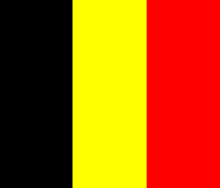Most of the Belgian cities you've probably heard of are in Flanders, so there aren't as many "undiscovered" places in this region as you'll find in the south. Still, there are some places that are decidedly off the beaten path. Here's a few:
Mechelen: it's about halfway between Brussels and Antwerp, and despite significant damage during both World Wars, its cathedral, palace and other architectural gems were largely preserved. It's also in the heart of the asparagus growing region, and many gourmets consider its "fat white" variety to be the best anywhere. (See picture #1, courtesy of Wikipedia)
Belgian coastal villages: we've been to De Haan, one of the quaint seaside villages, but there are numerous towns of varying size and atmosphere. There's a tram that runs almost the entire 65km of coastline and stops in nearly every town. This is a great way of getting around, and I've heard that riding the tram and hopping on and off along the way can be a nice daytrip. (See my post from October 9th, 2007 for pictures of De Haan)
Ypres: this city is unfortunately best known for being utterly destroyed in World War I. Over 300,000 Allied soldiers died here as well, so it's a somber place, as illustrated by the numerous monuments, cemetaries and the famous poem In Flanders Fields (there is also a museum of the same name). The town was rebuilt in accordance with its original design, so despite being relatively "new", it has managed to recreate much of its original charm. (See pictures #2 and #3, courtesy of Trabel and Wikipedia, of the rebuilt old town and the Menin Gate memorial)






No comments:
Post a Comment